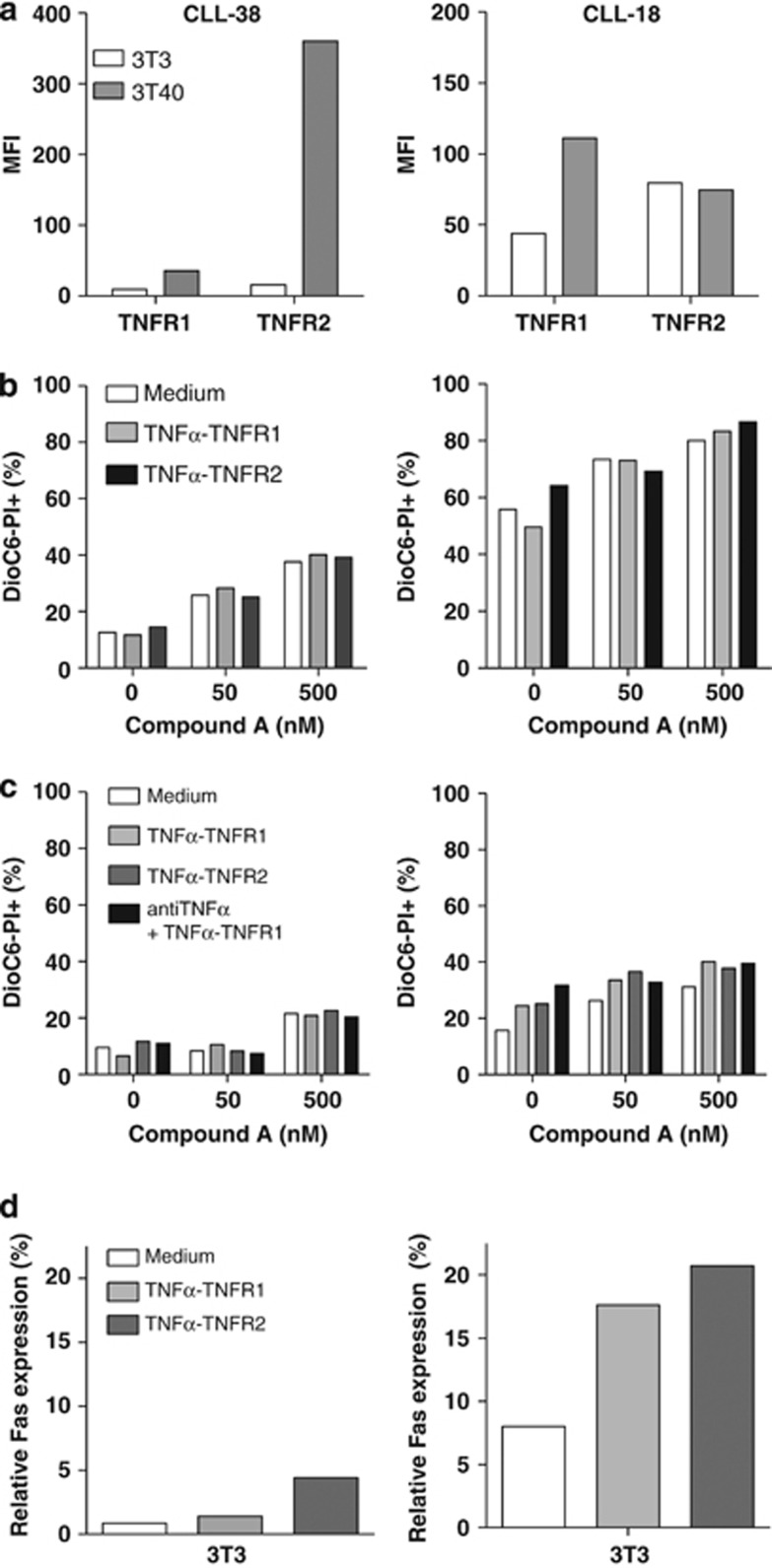Figure 4.
The effects of Compound A in combination with specific TNFR1/2 stimulation in CLL cells. CLL cells of a representative patient, which upregulate TNFR2 in response to CD40 stimulation (Pt-38 from Table 1), and cells of a patient that upregulate TNFR1 rather than TNFR2 (Pt-18 from Table 1) were selected for treatment with Compound A in combination with specific TNFR1/2 agonistic antibodies. (a) TNFR1 and TNFR2 expression levels on CLL cells of Pt-1 and Pt-2 co-cultured with control or 3T40-expressing 3T3 cells as measured with antibody staining, using flow cytometry. (b) CLL cells of Pt-1 and Pt-2 co-cultured with control 3T3 cells were treated with Compound A (50–500 nM) alone or in combination with TNFα mutants (100 ng/ml) that preferentially bind to TNFR1 (TNFα-TNFR1) or TNFR2 (TNFα-TNFR2). (c) CLL cells of Pt-1 and Pt-2 co-cultured with 3T40 cells were treated with Compound A (50–500 nM) alone or in combination with TNFα-TNFR1 (1 μg/ml) or TNFα-TNFR2 (1 μg/ml). Etanercept (10 μg/ml) was added to block endogenous TNFα activity. (d) Percentage of Fas expression in CLL cells co-cultured with 3T3 cells, in the presence and absence of TNFα-TNFR1 (1 μg/ml) and TNFα-TNFR2 (1 μg/ml), as measured with antibody staining using flow cytometry

